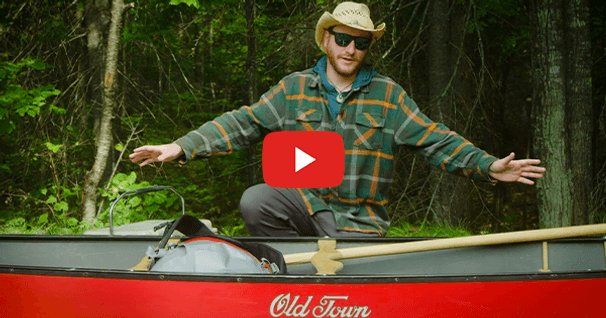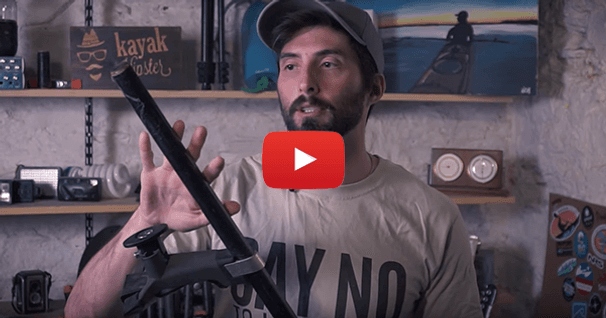Tiny Tips for Wilderness Canoe Trips (part 2)
Experienced wilderness canoe trippers know that small errors can cause big problems. In my previous article, I wrote about a few of the "little things" that can make or break a trip. Here are a few more for your consideration.
Keep packs tightly closed in camp: Experts keep their packs tightly sealed while they're in camp. Novices leave pack flaps and waterproof liners wide open so that critters and rain can drop in.
Don't lean paddles against a tree: Paddles stored flat on the ground can't fall and break. Bent-shaft paddles should be set "blade up"-so the blade won't break if accidentally stepped upon. Don't store paddles under an overturned canoe: animals might gnaw on them or they could be flushed out and lost in a heavy rain (it happened to me!). I keep my expensive paddles alongside my tent.
Keep your axe and saw accessible: Seconds count if you need to free someone or something from a strainer. Keep these edged tools handy!
Tie up beached canoes: A high wind can turn a canoe into a kite. Tie to trees or boulders. If there are none, pile rocks on top of your overturned canoe, or leave the canoe upright and place heavy packs or rocks in the belly. This is a common practice on the tundra.
Rigorously attend to the smallest skin cuts: A tiny cut can become quickly infected in the outdoors. Clean (with soap and water) all wounds immediately; apply Triple Antibiotic ointment (Vaseline works about as well) and cover with a band aid. Re-clean, add ointment and change the band aid every day.
Check (GPS) UTM-programmed waypoints in Latitude/Longitude mode: Make a numerical error while programming a GPS in UTM mode and you could be thousands of meters off! You won't make mistakes if you check your UTM-programmed waypoints in Latitude/Longitude format. Simply go to the set-up menu of your GPS and choose Latitude/Longitude coordinates. Roughly plot (eye ball 'em) the new coordinates on your map. Are you in the ball park? If so, switch back to the user-friendly UTM format. If not, check your UTM numbers again!
Take these items into your tent when you retire each night: • water bottle • pee bottle • rain gear • pepper spray • fire-arms • folding saw Bert Heep, who worked for Piragis Northwoods Co. in Ely, MN sawed his way to freedom when a tree fell on his tent (and trapped he and his wife inside) in the Boundary Waters Canoe Area.
Respect your PFD: • Don't store it under an overturned canoe where it could wash away in a storm (it has happened!). Instead, keep it inside your tent. • Don't sit on your PFD or pile packs upon it.
Use a plastic groundcloth inside your tent! Tent floors wear and seams eventually leak. A plastic ground cloth placed inside your tent will keep ground water from reaching you. Make the groundsheet a foot larger than your tent all-around so it wraps up the sidewalls a foot or so.
Attach your whistle to a D-ring on your PFD, not to the zipper pull: Larry Laba, CEO of SOAR boats tells the story of a man who attached his signal whistle to the zipper pull on his life jacket. The man capsized in a huge rapid. When he came up for air he swallowed the whistle-and nearly choked on it!
Don't wear anything on a cord around your neck: Some years ago, a friend capsized in an easy rapid. He had a whistle attached to a cord which he wore around his neck. The man was swept into a strainer and the cord caught on a branch. Fortunately, he was able to use his sheath knife to cut himself free. His neck bore the scar of the encounter for some time.
As you can see, the "devil is in the details". Small errors can cause serious problems when things go wrong.
Cliff Jacobson is a professional canoe guide and outfitter for the Science Museum of Minnesota, a wilderness canoeing consultant, and the author of more than a dozen top-selling books on camping and canoeing. www.cliffcanoe.com
Related Articles
Walker from Old Town shares a quick tip on how to pack a balanced canoe to help ensure better tracking…
The most important knot for all paddlers to know is the Trucker’s Hitch knot. It is a simple knot that…
Learn more about different types of roof rack transportation solutions to help you move your gear as…
A kayaking buddy, we'll call him "Ben", is one heck of a paddler. He's got years of big, blue water…



